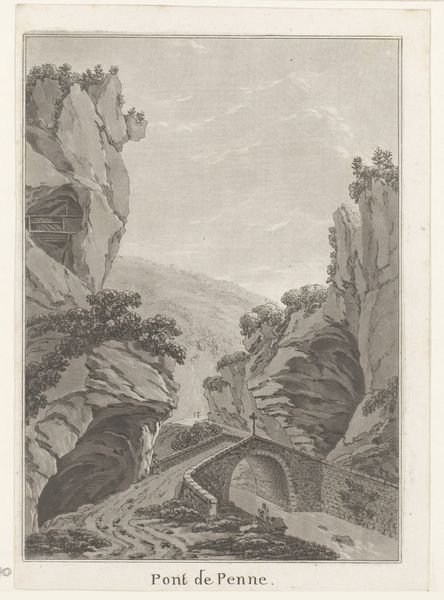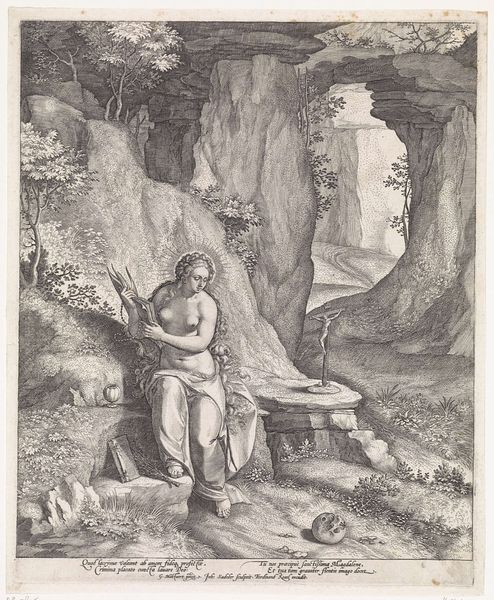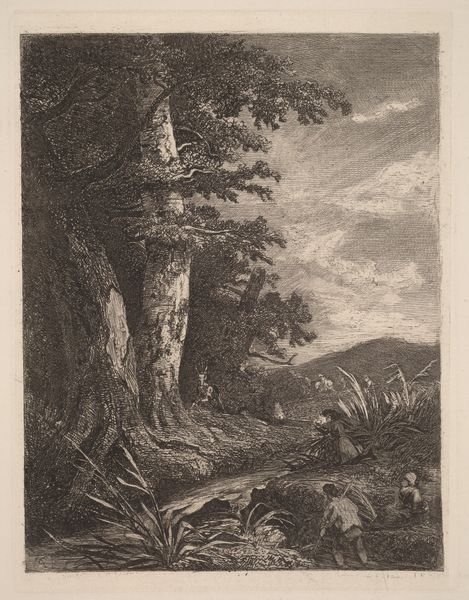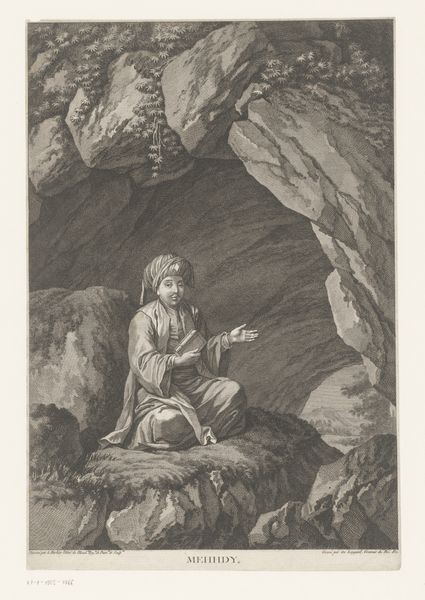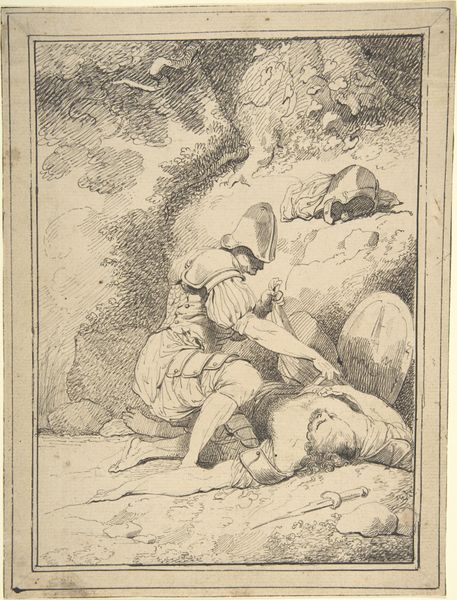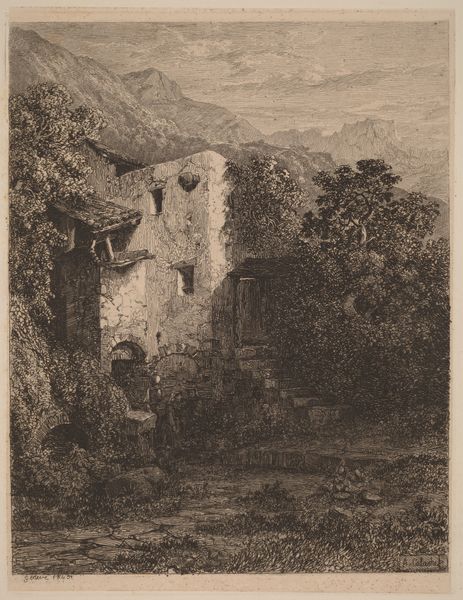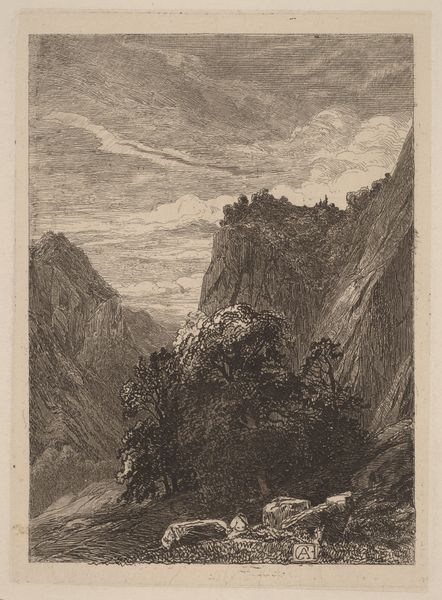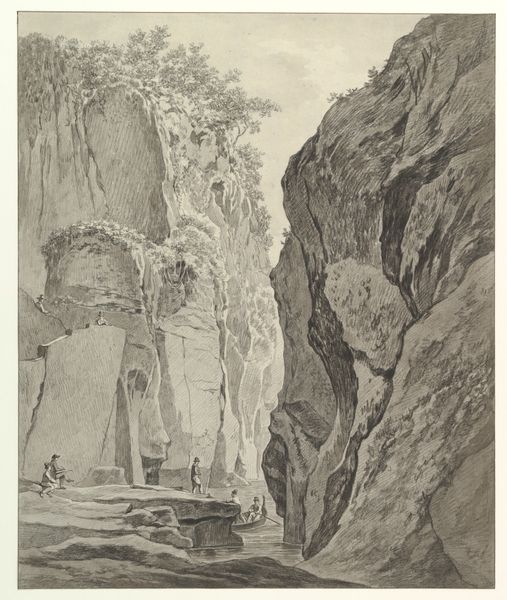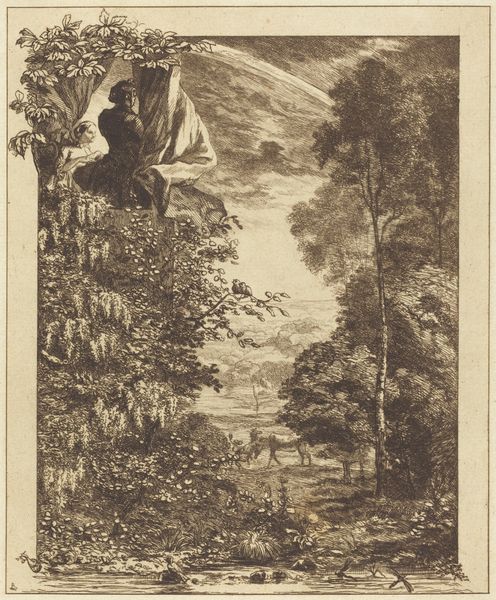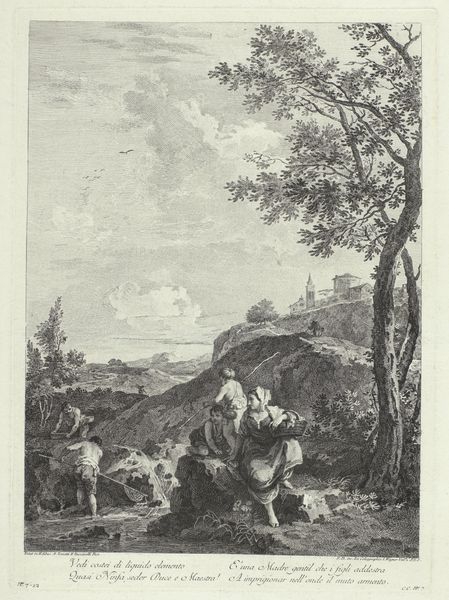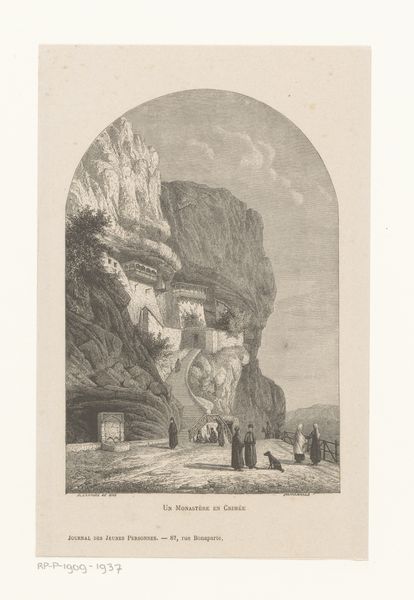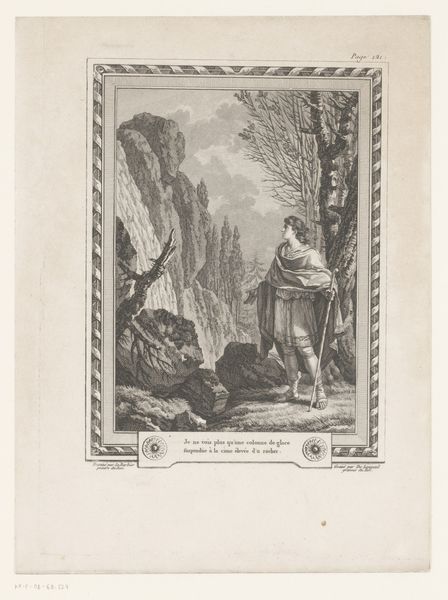
The Caves of Acradina near Syracuse in Sicily 1797
0:00
0:00
drawing, print
#
drawing
# print
#
landscape
#
romanticism
Dimensions: sheet: 16 5/16 x 13 1/4 in. (41.5 x 33.6 cm)
Copyright: Public Domain
Curator: This print by Jacob Wilhelm Mechau, titled "The Caves of Acradina near Syracuse in Sicily," dates to 1797 and resides here at the Met. Editor: It evokes a sense of quietude, despite the dramatic rocky formations. There's something so elegantly simple in its composition, the way the artist uses the archway as a frame... Curator: Mechau was clearly fascinated by the picturesque qualities of the Sicilian landscape. His use of wash and line creates a depth that draws you into the scene. We should acknowledge that while Mechau created several landscapes with the use of chalk or etching methods, this piece incorporates pen, black ink, and gray wash over graphite. Editor: Yes, but consider how the washes establish volume, making the craggy textures almost palpable. It’s all about contrasts. He understood the dialogue between light and shadow to convey a feeling of awe. Also, observe the meticulous layering of materials on a prepared ground; what considerations about the sourcing and trade of these various goods come to mind when we engage the context? Curator: These were popular tourist destinations. The very act of creating and circulating such images served a purpose: facilitating and mediating experiences of places both remote and historical. By documenting his own encounters with this site, he actively participates in the larger artistic discourse surrounding landscape representation. Editor: The lone figure in the foreground definitely amplifies this romantic fascination, this interplay between nature’s grandeur and human vulnerability. Look how small he appears, yet central to the image! Curator: Indeed. These prints likely had a market, perhaps among those who romanticized travel or simply desired a tangible connection to classical sites and imagery of the Grand Tour. The industrialization of the printing process made mass production of artwork possible. These historical accounts also allow an accessible glimpse into consumption in 18th-century markets and trade. Editor: This piece encourages us to think deeply about how Mechau invites us to consider light, shadow, depth, texture, and finally, feeling. It shows how fundamental form and medium are to meaning. Curator: Ultimately, its importance lies in how we interrogate this encounter as one constructed via a very specific historical and material lens. It challenges us to appreciate this as not just a landscape, but as an artifact deeply entangled with its moment of making and viewing.
Comments
No comments
Be the first to comment and join the conversation on the ultimate creative platform.
